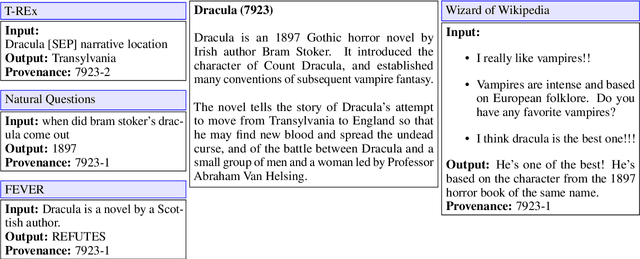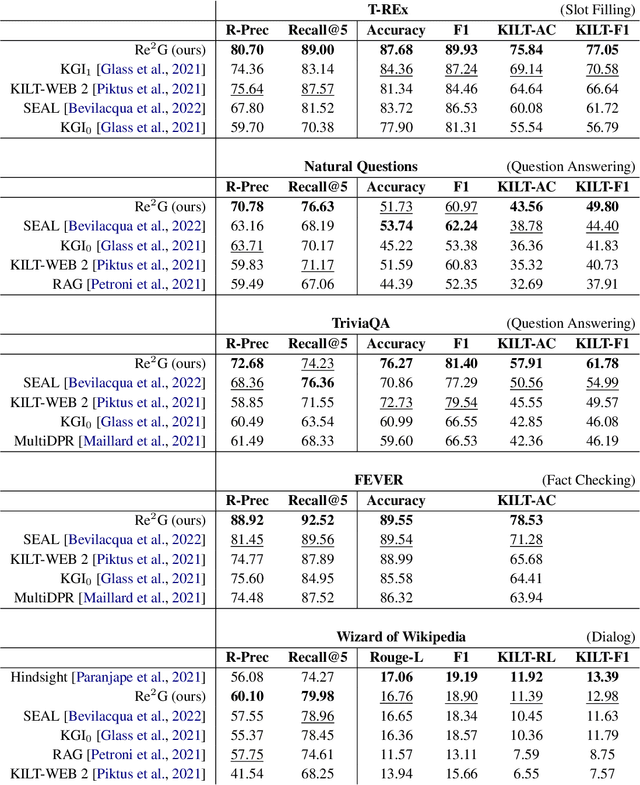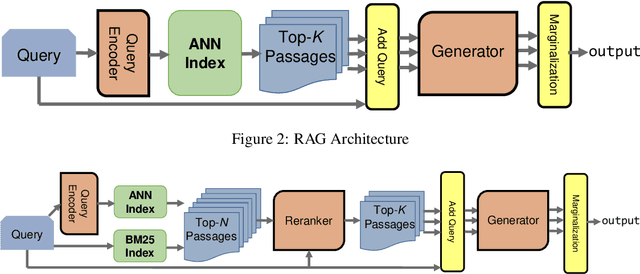Ankita Rajaram Naik
Retrieval-Based Transformer for Table Augmentation
Jun 20, 2023Abstract:Data preparation, also called data wrangling, is considered one of the most expensive and time-consuming steps when performing analytics or building machine learning models. Preparing data typically involves collecting and merging data from complex heterogeneous, and often large-scale data sources, such as data lakes. In this paper, we introduce a novel approach toward automatic data wrangling in an attempt to alleviate the effort of end-users, e.g. data analysts, in structuring dynamic views from data lakes in the form of tabular data. We aim to address table augmentation tasks, including row/column population and data imputation. Given a corpus of tables, we propose a retrieval augmented self-trained transformer model. Our self-learning strategy consists in randomly ablating tables from the corpus and training the retrieval-based model to reconstruct the original values or headers given the partial tables as input. We adopt this strategy to first train the dense neural retrieval model encoding table-parts to vectors, and then the end-to-end model trained to perform table augmentation tasks. We test on EntiTables, the standard benchmark for table augmentation, as well as introduce a new benchmark to advance further research: WebTables. Our model consistently and substantially outperforms both supervised statistical methods and the current state-of-the-art transformer-based models.
Re2G: Retrieve, Rerank, Generate
Jul 13, 2022



Abstract:As demonstrated by GPT-3 and T5, transformers grow in capability as parameter spaces become larger and larger. However, for tasks that require a large amount of knowledge, non-parametric memory allows models to grow dramatically with a sub-linear increase in computational cost and GPU memory requirements. Recent models such as RAG and REALM have introduced retrieval into conditional generation. These models incorporate neural initial retrieval from a corpus of passages. We build on this line of research, proposing Re2G, which combines both neural initial retrieval and reranking into a BART-based sequence-to-sequence generation. Our reranking approach also permits merging retrieval results from sources with incomparable scores, enabling an ensemble of BM25 and neural initial retrieval. To train our system end-to-end, we introduce a novel variation of knowledge distillation to train the initial retrieval, reranker, and generation using only ground truth on the target sequence output. We find large gains in four diverse tasks: zero-shot slot filling, question answering, fact-checking, and dialog, with relative gains of 9% to 34% over the previous state-of-the-art on the KILT leaderboard. We make our code available as open source at https://github.com/IBM/kgi-slot-filling/tree/re2g.
 Add to Chrome
Add to Chrome Add to Firefox
Add to Firefox Add to Edge
Add to Edge